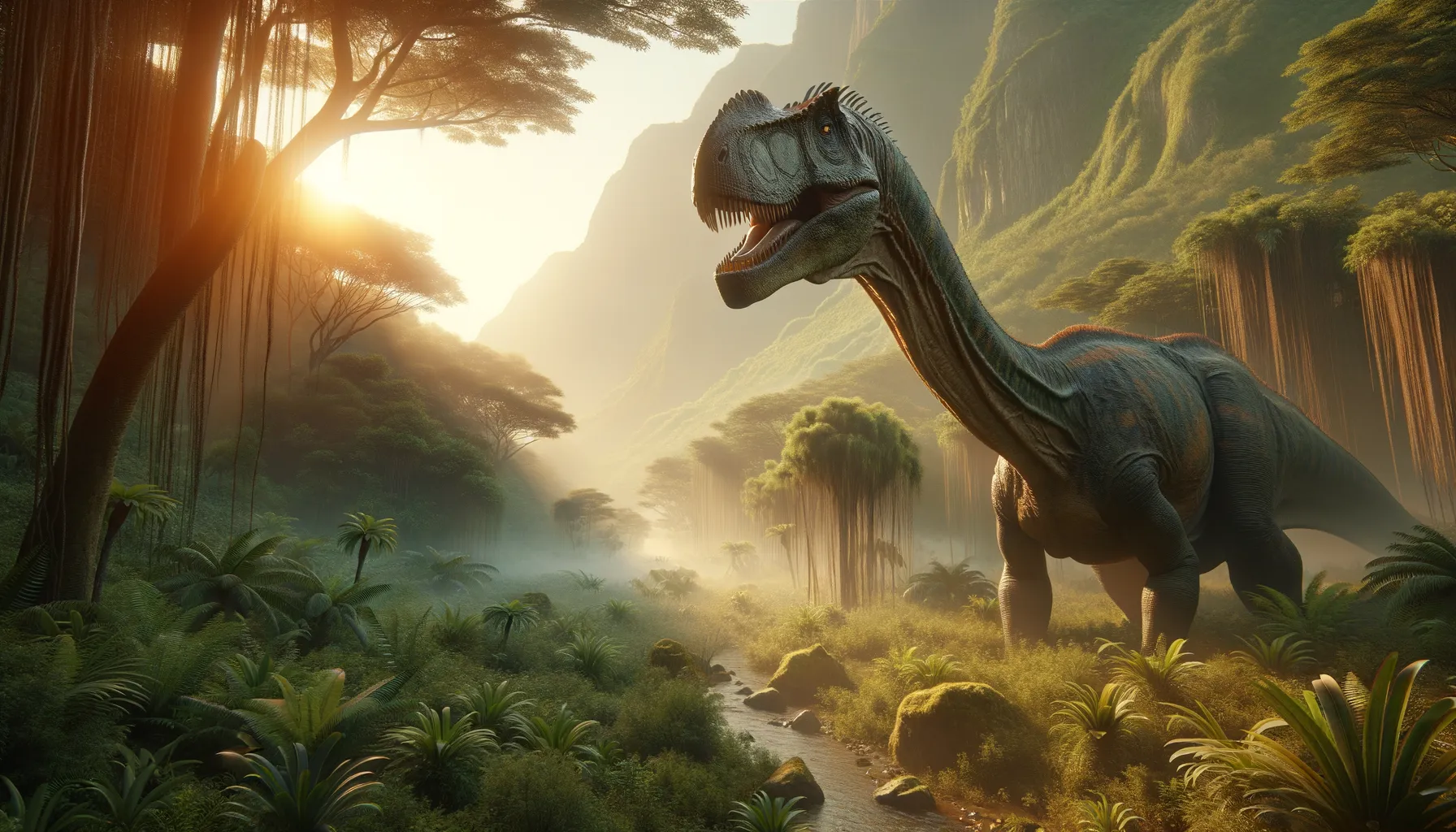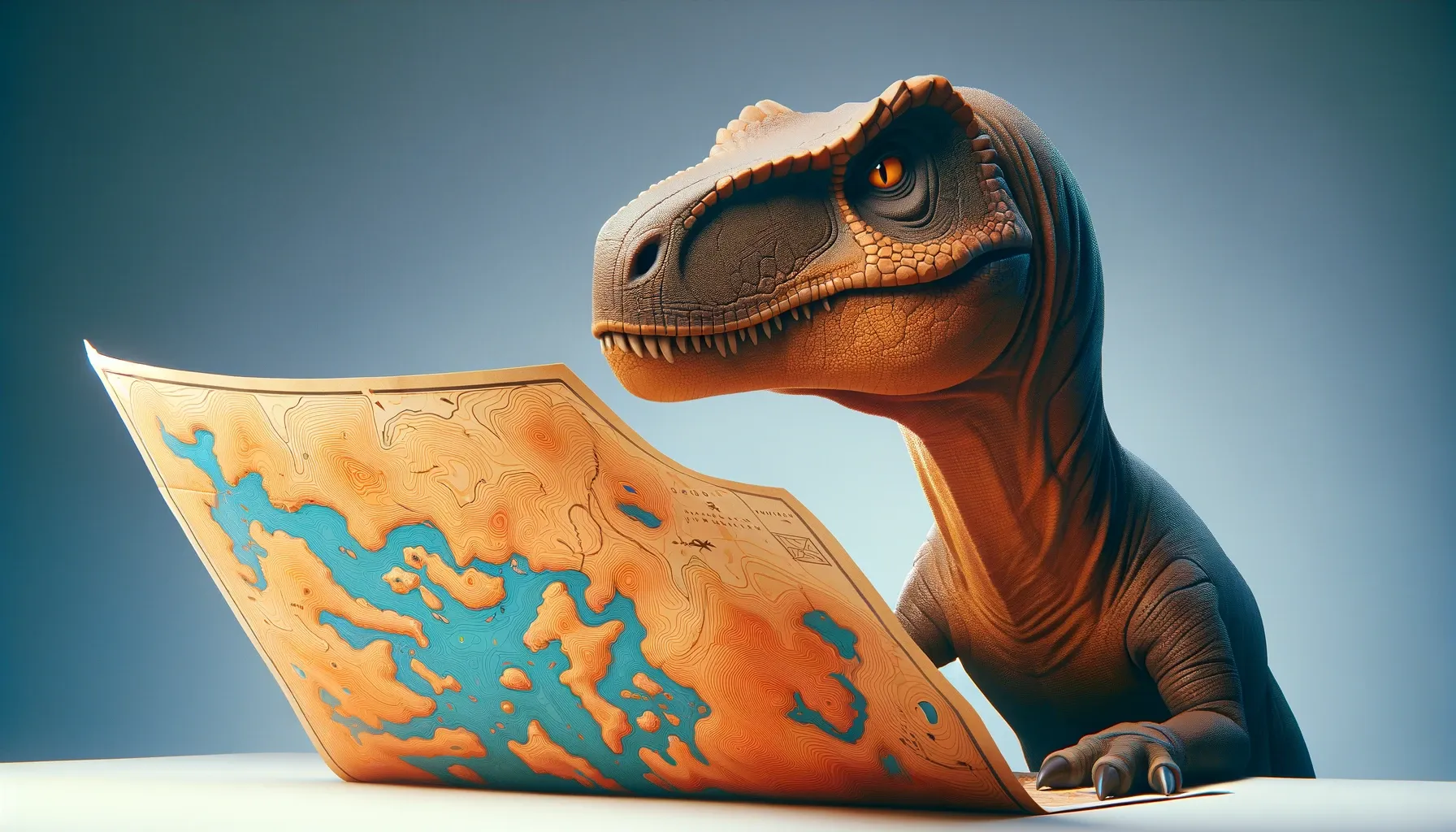
Cardiodon
Heart-shaped teeth of mystery and might!
Period
Jurassic
Length
Approximately 15 meters long.
Height
Around 4 meters at the shoulders.
Weight
Estimated around 20 metric tons.
Cardiodon was an early sauropod dinosaur known primarily from very limited fossil remains. Its heart-shaped teeth were unique, providing insight into its herbivorous diet. Cardiodon lived during the Middle Jurassic period, and its fossils have offered only a glimpse into its biology. Despite the scarcity of specimens, its characteristics suggest typical sauropod features, including massive size and a long neck, aiding in feeding from tall vegetation.
Diet
Cardiodon was a herbivore, feeding on plants. Its heart-shaped teeth suggest it may have specialized in eating specific types of vegetation, possibly those abundant during its time.
Hunting
As an herbivore, Cardiodon did not hunt. Instead, it likely moved across its habitat grazing on available plant material, possibly eating leaves, ferns, and conifers.
Environmental challenges
Cardiodon faced challenges such as finding ample food sources to sustain its massive body. It lived in a landscape that was constantly changing due to climatic shifts, which impacted the availability of food. Predation risks from large carnivores of the time also posed a significant threat, especially to the young and infirm.
Speed
Likely slow due to its large size.
Lifespan
Estimated to live for several decades.
First discovery
Discovered in 1841 by Richard Owen in England.
Fun Facts
- Cardiodon was one of the first dinosaurs to have a name based on just a single tooth finding.
- Its name 'Cardiodon' means 'heart tooth' because the tooth was heart-shaped.
- Cardiodon lived during the Middle Jurassic period, around 166 million years ago.
- This dinosaur was discovered in England, making it one of the early discoveries in dinosaur paleontology.
- The original Cardiodon tooth is now held in the Natural History Museum in London.
- Very little is known about Cardiodon due to the limited fossil evidence available.
- Cardiodon is believed to have been a large, herbivorous dinosaur from the sauropod family.
Growth and Development
Cardiodon likely experienced fast growth rates typical of sauropods, rapidly reaching sizes large enough to deter predators. Juveniles might have lived in groups for protection. As with other dinosaurs, understanding growth patterns comes from studying bone histology, which can reveal growth marks akin to tree rings.
Habitat
Cardiodon inhabited regions that were likely lush with vegetation, providing the necessary resources for its herbivorous diet. During the Jurassic period, its environment would have included vast forests and open floodplains. These varied habitats allowed for the presence of diverse plant life essential for sustenance.
Interaction with other species
Cardiodon coexisted with various dinosaur species, both herbivorous and carnivorous. The presence of large predators would have required Cardiodon to remain vigilant, especially in protecting its young. Interaction with other herbivores might have involved competition for food resources.
Natural lifespan
Cardiodon may have lived up to 70 years under optimal conditions.
Reproduction
Similar to other sauropods, Cardiodon likely laid eggs, with nesting being a critical aspect of their reproductive cycle. Reproduction involved breeding at appropriate seasons to take advantage of food abundance for hatchling survival. Parental care could have been limited, with young left to fend for themselves after hatching.
Social behaviour
Evidence suggests that like many sauropods, Cardiodon might have exhibited some form of social behavior, possibly moving in herds for protection. Social structures among sauropods could have provided advantages in navigating their ecosystem, especially in mitigating predation risks.
Fossil locations
Fossils of Cardiodon have been primarily found in the United Kingdom, specifically in the Green Sandstone of Wiltshire. The limited fossil record makes defining its distribution challenging, and additional discoveries could further illuminate its range. As it stands, the current locations provide invaluable insight into early sauropod evolution in Europe.
